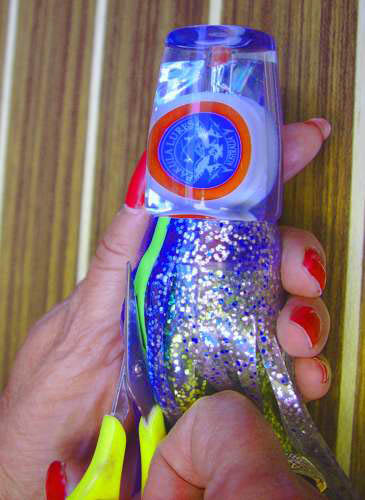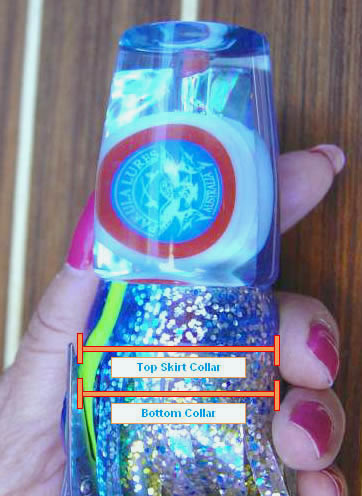04. Improving Lure Performance
Between The Lines - Ch 06: Lure Introduction
There are many things that can be done to improve the way a lure performs. A lure that is working at its optimum not only attracts more fish but is far more likely to get aggressive strikes that result in better hook-ups.
Unfortunately, there are several aspects of making and selling lures that make producing 'blueprinted' lures unadvisable. It can make them more delicate and can be very time consuming on mass, which increases prices dramatically.
Symmetrically-shaped heads such as Pakula Lures have an action based on cyclical erratic head shaking, that is, an erratic swimming cycle. This pivot point is just at the back of the lure head. (Vid 1)
| Vid 1 |
Because of the way trolling skirts are made the tentacles may start a fair way away from this pivot point. The skirt tube between the back of the head and where the strands are cut does make the skirt and lure as a whole more resilient, but it does restrict lure action.
 |
 |
 |
|
Fig 1 |
Fig 2 |
Fig 3 |
To increase the ability of the lure to flex and have more action, carefully cut all of the strands (Fig 1) with a sharp pair of scissors to the back of the lure collars. (Fig 2) Do the overskirt first then the underskirt.
To further enhance lure action trim the tail of the skirts (Fig 3) so that the overskirt is slightly shorter than the underskirt. On 12-inch lures, the difference should be about half an inch and proportionate in other sizes. (Vid 2)
| Vid 2 |
Once you run your lures and have a look at their performance you can increase their action by shortening the skirt length. The skirts act much like the tail of a kite - the longer they are the more drag and stability they give the lure. However, when you trim them to increase action only trim small amounts, say a quarter of an inch, as once you cut too much off you can't restore the length and will have to replace the skirts.
There are certainly many other factors that we will deal with as we progress through the chapters.





